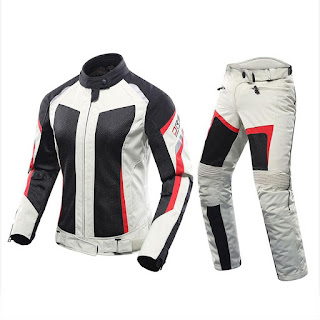How to Gear Up for Riding (What to Wear)
How to Gear Up for Riding
 Riding a motorcycle is inherently dangerous. According to National Highway Traffic Safety Administration (NHTSA) data, motorcycling is 33 times more dangerous than driving a car. There is a saying in motorcycle culture that there are two types of riders: Those who have crashed, and those who haven’t crashed yet. However, don’t let that scare you off! With the proper gear you can enjoy how amazing riding is while keeping your skin on your body.
Riding a motorcycle is inherently dangerous. According to National Highway Traffic Safety Administration (NHTSA) data, motorcycling is 33 times more dangerous than driving a car. There is a saying in motorcycle culture that there are two types of riders: Those who have crashed, and those who haven’t crashed yet. However, don’t let that scare you off! With the proper gear you can enjoy how amazing riding is while keeping your skin on your body.GEAR 1: HELMET
The very first thing you will need is a helmet. The helmet is one of the most important or if not, THE most important gear amongst all riding gear. It protects your face from bugs, leaves, dust and anything that is out there trying to hit you in the face when you're riding. Second of all, you get to keep your brain if you somehow crash and hit your head during high speed riding. Thirdly, you get to keep your beautiful or handsome face as well if by any chance you crash during high speed and drag your face onto the ground (TRUST ME, you don't want that to happen!). It is recommended that you buy a full face helmet and the helmet you're buying is from a legitimate and verified stores, because your life is worth spending a few hundred dollars on a good and reliable helmet!
GEAR 2: GLOVES
The second most important piece of equipment for me is riding gloves. That’s because if you are in a motorcycle accident flying through the air, you are most likely going to try and extend your hands in order to protect yourself. If you don’t have anything protecting your hands, then you can break bones, lose skin, and even lose your fingers! In addition, they protect your hands from sun and wind, help you keep a firm grip on the handles even when your palms sweat and keep you warm on chilly days. Unlike helmets, you can actually get yourself a good riding gloves within a hundred dollars to protect your knuckles from the elements out there. P/S: It is advised that you invest on a full finger gloves instead of half ones.
GEAR 3: RIDING PANTS & JACKET
Although the day may be hot, wear long pants and a jacket anyway. If anything goes wrong, your skin will thank you. Cover up with durable fabrics, like leather. Ideally, your jacket will be specifically made for motorcyclists. For optimal safety, you should also wear motorcycle body armor under your jacket. Those little pieces of armor embedded under riding pants and jacket are made and designed specifically to endure being dragged on asphalt, so that you can still get up with your skin intact after you crash. And if you're going to have a long-journey or high speed rides, please DO NOT wear shorts (or skirts if you're a female rider). Stick to long pants and long sleeved jacket (If possible), and you might get to live without scars and regrets!GEAR 4: BOOTS
Boots are often overlooked as a key protective garment. Many riders simply wear rugged hiking or work boots for both local and long-distance travel, and if the boot extends over the top of the ankle, these can afford a reasonable degree of protection. But still, proper over-the-ankle riding boots are a better option. Not only that they look great, riding boots also protect the small bones in your feet in case of a crash as they contain plastic armor and/or soft foam padding in the shin, heel, ankle and toe areas. A key note when you're buying riding boots: You want sturdy, solid boots that don't twist and bend easily, because they need to keep your feet and ankles stable in a crash. The right boots also have non-slip soles so they stay in place on the pedals. Look for boots that extend at least to the ankles and ties tightly to stay securely on the foot.




Just got into riding a few weeks ago, thanks for the info!
ReplyDeleteGreat info, thank you !
ReplyDeleteGreat info about riding! Thank you
ReplyDelete